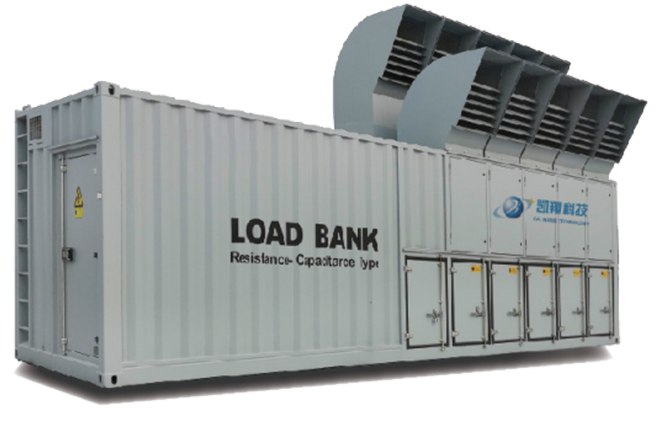Environmental requirements for the use of high-power generator load banks
Time:2024-09-05
The operating environment requirements for a load bank, as a crucial device for testing generator performance, are essential to ensure the accuracy and safety of the tests as well as the long-term stable operation of the equipment itself. The following are the main requirements for the operating environment of a load bank:
1. Temperature and Humidity Control
Temperature Range: It should be maintained within the recommended operating temperature range by the equipment manufacturer, typically between -10°C and +50°C, depending on the specific model. Excessively high or low temperatures can affect the performance and lifespan of the electrical components within the load bank.
Humidity Control: Relative humidity should be controlled between 30% and 85% to prevent electrical component corrosion or short circuits caused by high humidity, as well as static electricity issues that may arise from low humidity.
generator load bank
2. Ventilation and Heat Dissipation
Good Ventilation: The load bank generates significant heat during operation, necessitating a well-ventilated installation environment for effective heat dissipation. It is recommended to install it in an indoor area with good ventilation or equip it with a dedicated cooling system.
Avoid Heat Sources: Keep it away from other heat sources, such as furnaces or heating equipment, to prevent excessively high ambient temperatures from affecting the normal operation of the load bank.
3. Electrical Environment
Stable Power Supply Voltage: The input power supply voltage must be stable, within the allowable range specified by the equipment, to ensure accurate testing of the load bank and the generator under test.
Proper Grounding: Ensure that the load bank and all related equipment are properly grounded to prevent electrical shock hazards and electromagnetic interference.
Electromagnetic Shielding: When used in environments with strong electromagnetic fields, take appropriate electromagnetic shielding measures to reduce the impact of external electromagnetic interference on test results.
4. Physical Environment
Flat and Stable Installation: The installation surface should be flat and free of vibration to ensure stable operation of the load bank. If necessary, use vibration damping pads or fixing devices to reduce vibrations.
Dust and Water Resistance: Depending on the requirements of the operating environment, select a load bank with the appropriate dust and water resistance rating (e.g., IP rating) to prevent dust, moisture, or other contaminants from entering the equipment.
Space Requirements: Ensure that there is sufficient operating and maintenance space around the load bank to facilitate routine inspections and troubleshooting.
5. Safety and Protection
Safety Signage: Display safety warning signs in prominent locations to remind operators of safety precautions.
Emergency Stop: Equip with an emergency stop device to quickly cut off power in emergency situations, protecting personnel and equipment safety.
Protective Devices: For areas that may generate high temperatures, high pressure, or high-speed rotating parts, install protective covers or isolation devices to prevent accidental injuries.
In summary, the operating environment for a load bank requires comprehensive consideration of temperature, humidity, ventilation, electrical, physical environment, and safety requirements to ensure accurate test results and the safe and stable operation of the equipment.
News Recommendation
-
 2024-09-11
2024-09-11TRIUMPH LOAD EXHIBITING AT Enlit Europe 2024 -BOOTH 7.H08
-
 2023-04-21
2023-04-21TRIUMPH LOAD EXHIBITING AT DATA CENTER WORLD GERMANY 2023-BOOTH F909
-
 2023-04-06
2023-04-06TRIUMPH LOAD EXHIBITING AT ELECTRIC POWER TECH KOREA 2023 – Booth G109
-
 2022-05-05
2022-05-05What is the role of ac load bank for power supply?
-
 2022-05-05
2022-05-05What is the role of the load bank?


